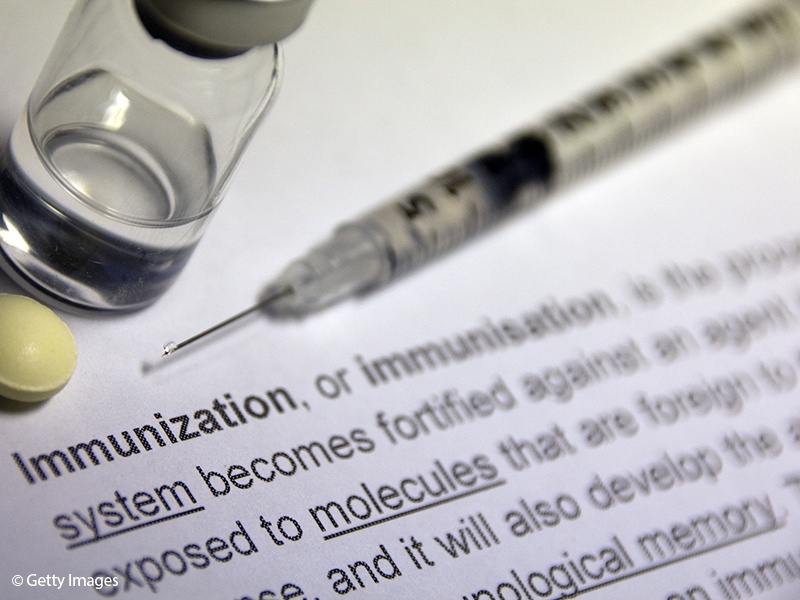The question on everyone’s mind, scientist and general public alike, is: When is a safe and effective COVID-19 vaccine going to be available? Given the human race has been practicing vaccination in one form or another for hundreds of years, it may seem a simple task to whip up a vaccine for COVID-19. However, in reality development of a new vaccine remains a challenging scientific undertaking and the path from lab to clinic is often a winding road. To address this critical question, this blog will overview general vaccine approaches and provide greater insight into the current and rapidly advancing COVID-19 vaccine pipeline.
Read the CAS Special Report: Research and Development on Therapeutic Agents and Vaccines for COVID-19 and Related Human Coronavirus Diseases recently published in ACS Central Science.
Many paths to inducing immunity
The classical approach to vaccination relies on two categories of vaccines, live-attenuated and killed. These are the most recognizable vaccines that we receive in childhood as protection against diseases such as polio and measles, mumps and rubella (MMR), respectively. While these types of vaccines are effective for most individuals, there is still extensive investigation underway to make vaccines safer, easier to manufacture and better characterized from a compositional viewpoint.
To address safety concerns, scientists have attempted to reduce the pathogen material that is administered, also called the antigen (or immunogen), to the minimum needed to elicit immunity. A notable example of this is the DPT (diphtheria-pertussis-tetanus) vaccine that contains inactivated toxins of diphtheria and tetanus in combination with either killed whole cell Bordetella pertussis or an acellular B. pertussis product. In addition, since we know that the infective process itself is effective in raising an immune response, genetic engineering has been utilized to construct virus-like particles (VLPs) from the capsid and envelope proteins of viruses. The VLPs contain no nucleic acid and are non-replicative increasing safety, but are still effective in generating an immune response like the intact virus. Alternatively, immunogenic proteins of a pathogen can be engineered into a non-pathogenic or attenuated vector (e.g., adenovirus, Salmonella) that can stimulate the immune system similarly to a real infection. Most recently, antigens have been shown to be deliverable as nucleic acid (either RNA or DNA) for the host to translate the encoded protein(s) for processing by the immune system. A summary of all of the vaccine types with examples is shown in Table 1.
|
Type |
Active Component |
Advantage |
Disadvantage |
Vaccine Example |
|
Live, attenuated |
Pathogen capable of replication |
Strong and long-lasting immune response, usually lifetime protection |
Risk of disease |
Tuberculosis, MMR, smallpox, chickenpox, yellow fever |
|
Inactivated |
Pathogen chemical or heat treated to prevent replication |
No risk of disease |
Lesser immune response; booster shots may be needed |
Flu, hepatitis A, polio, rabies |
|
Subunit (protein, polysaccharide, conjugate, toxoid) |
Portions of a pathogen |
No risk of disease |
Booster shot often needed |
Hepatitis B, HPV, whooping cough, shingles, meningococcal disease, pneumococcal disease, diphtheria, tetanus |
|
VLP |
Outer coat of virus |
No risk of disease |
Hepatitis B, cervical cancer, malaria |
|
|
Recombinant vector vaccine |
Non-pathogenic virus or bacteria as carrier of immunogen of interest |
Reusable for diverse antigens; no risk of disease |
Pre-existing or development of immunity to vector |
No approved vaccine available |
|
DNA vaccine |
Plasmid or other expression vector |
Fast to produce; no risk of disease; reusable technology |
Lack of data |
Veterinary medicine (canine melanoma, |
|
mRNA vaccine |
RNA that encodes a disease-specific pathogen protein |
Fast to produce; no risk of disease; |
Effectiveness and side effects are unknown |
No approved vaccine available |
Factors influencing vaccine approach
Each of the vaccine approaches highlighted in Table 1 has advantages and disadvantages. Beyond the discovery of an effective approach for inducing immunity to the target pathogen, conforming to regulations and overcoming manufacturing constraints (culture, purification, product complexity and stability) are two of the biggest challenges to bringing a successful vaccine product to market. These constraints can be further aggravated by seasonal variability and mutability of the targeted pathogens. Thus, there are many factors beyond efficacy that may impact the choice of therapeutic approach.
Classic vaccine approaches using attenuated and killed vaccines are the least complex and most well understood, but their manufacturing may require special facilities. Also, chemical or heat treatment to produce killed pathogens can reduce their effectiveness in generating the desired immune response. Subunit vaccines are a safer alternative that provide well-characterized immunogen(s), but in cases when the desired protein antigen is membrane-bound and a non-covalent association of multiple subunits, as is the case with the SARS-CoV-2 spike glycoprotein, production can be problematic.
Of the more recently developed vaccine technologies, virus-like particles hold promise as the best mimic of the target pathogen. However, they must be uniquely created for each pathogen increasing development cost and time to market. Vectored vaccines use transgenic non-pathogenic bacteria or viruses to deliver a heterologous vaccine antigen. Similar to VLPs, the vectors are uniquely constructed but have the advantage of being a reusable platform which could reduce development time and cost. However, a downside to using vectors as vaccine antigen carriers is that pre-existing or induced immunity to the vector can attenuate the efficacy. Nucleic acid vaccines avoid the problem of complex antigen production and are re-useable technology, but they may be subject to reduced immunogenicity in treated hosts.
Breaking down the COVID-19 vaccine pipeline
An examination of WHO data on 133 COVID-19 candidate vaccines currently in the pipeline shows that 10 have advanced from pre-clinical to clinical trials, as of this publication (Table 2). Notably, four of the 10 are inactivated. Interestingly, vaccine giants such as AstraZeneca, Novavax, Pfizer and Inovio have each chosen to invest in different approaches, focusing resources on vectored, subunit, RNA, and DNA platforms, respectively.
|
Platform |
Candidate |
Developer |
Current stage of clinical evaluation/regulatory status- Coronavirus candidate |
|
Non- Replicating Viral Vector |
ChAdOx1-S |
University of Oxford/AstraZeneca |
Phase2b/3 Phase 1/2 |
|
Non- Replicating Viral Vector |
Adenovirus Type 5 Vector |
CanSino Biological Inc./Beijing Institute of Biotechnology |
Phase 2 ChiCTR2000031781 Phase 1 ChiCTR2000030906 |
|
RNA |
Lipid nanoparticle (LNP)- |
Moderna/NIAID |
Phase 2 NCT04405076 Phase 1 NCT04283461 |
|
Inactivated |
Inactivated |
Wuhan Institute of Biological Products/Sinopharm |
Phase 1/2 ChiCTR2000031809 |
|
Inactivated |
Inactivated |
Beijing Institute of Biological Products/Sinopharm |
Phase 1/2 ChiCTR2000032459 |
|
Inactivated |
Inactivated + alum |
Sinovac |
Phase 1/2 NCT04383574 NCT04352608 |
|
Protein Subunit |
Full length recombinant SARS CoV-2 |
Novavax |
Phase 1/2 NCT04368988 |
|
RNA |
3 LNP-mRNAs |
BioNTech/Fosun Pharma/Pfizer |
Phase 1/2 |
|
Inactivated |
Inactivated |
Institute of Medical Biology, Chinese Academy of Medical Sciences |
Phase 1 |
|
DNA |
DNA plasmid vaccine with electroporation |
Inovio Pharmaceuticals |
Phase 1 NCT04336410 |
*Source: https://www.who.int/publications/m/item/draft-landscape-of-Covid-19-candidate-vaccines (as of 6/9/2020)
These COVID-19 vaccine candidates are receiving unprecedented regulatory leeway to accelerate safety and efficacy testing in the effort to get a vaccine to market quickly and save lives. However, it is important to remember that the parameters for protective immunity against SARS-CoV-2 have yet to be completely defined so it is way too early in the race to pick a winner. Thus, despite the tremendous global research investment and the critical importance of success, it is yet unknown how long it will be before a vaccine for COVID-19 is widely available.
As part of the global scientific community, CAS has committed to leveraging all of our assets and capabilities to support the fight against COVID-19. Explore the additional CAS COVID-19 resources including scientific insights, open access datasets, and special reports.


